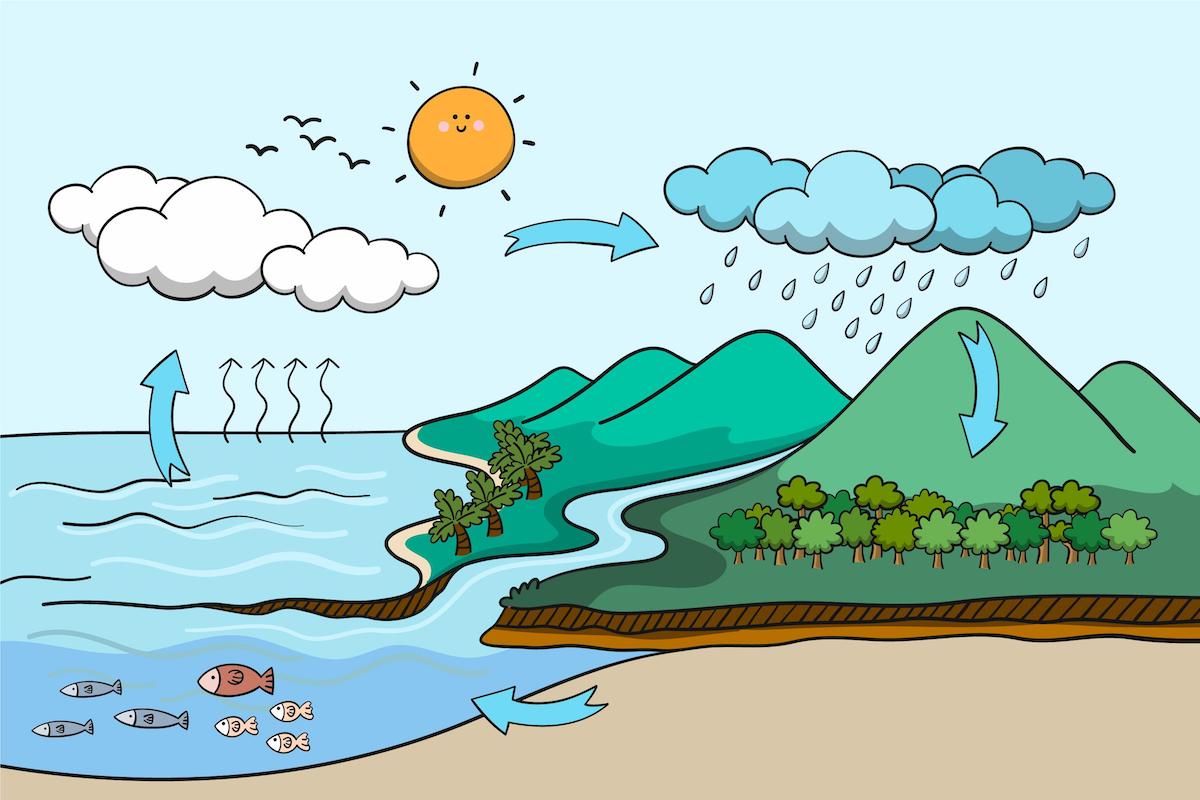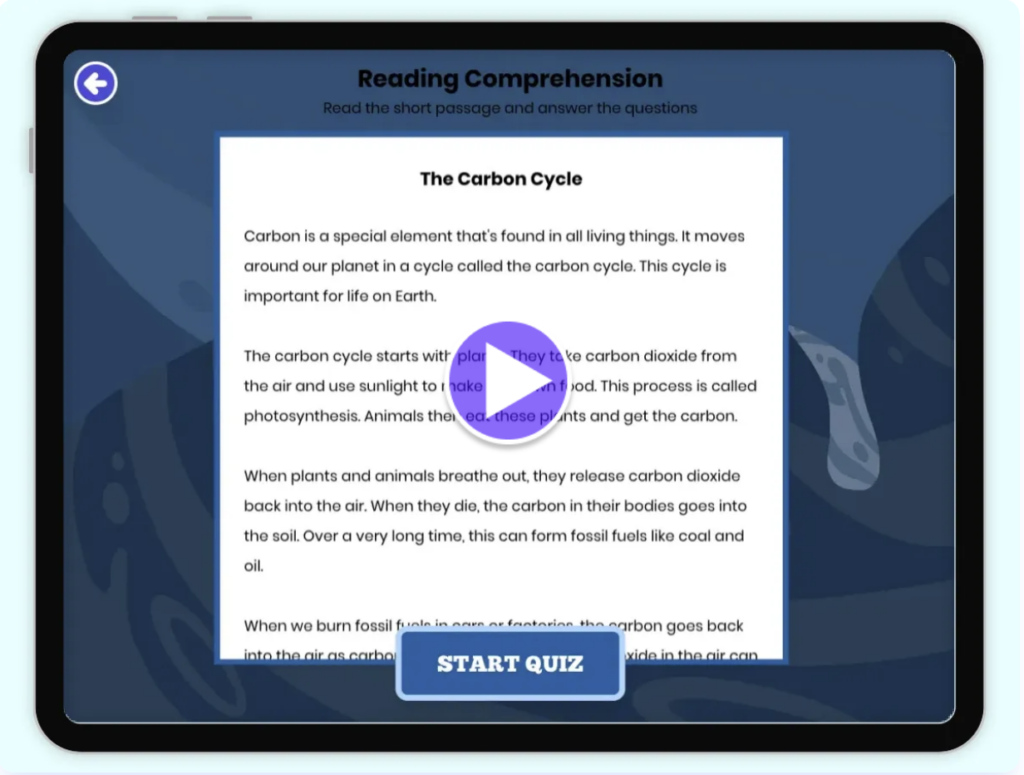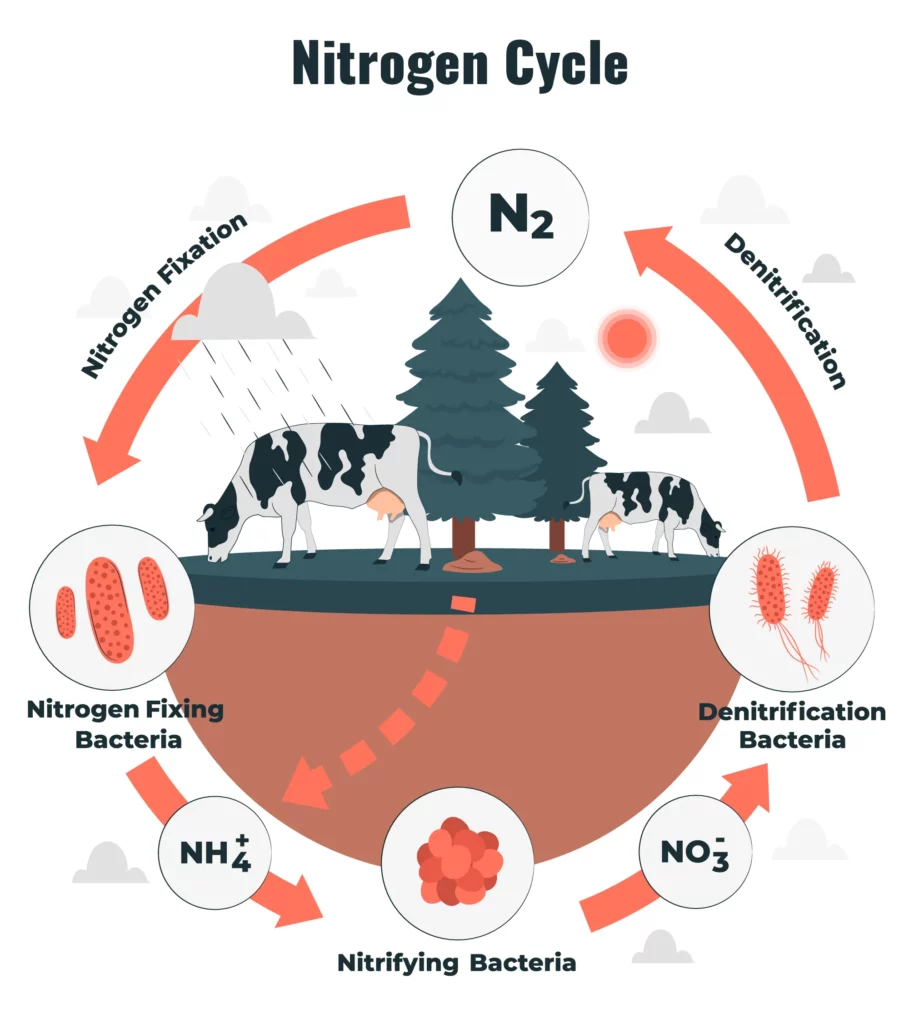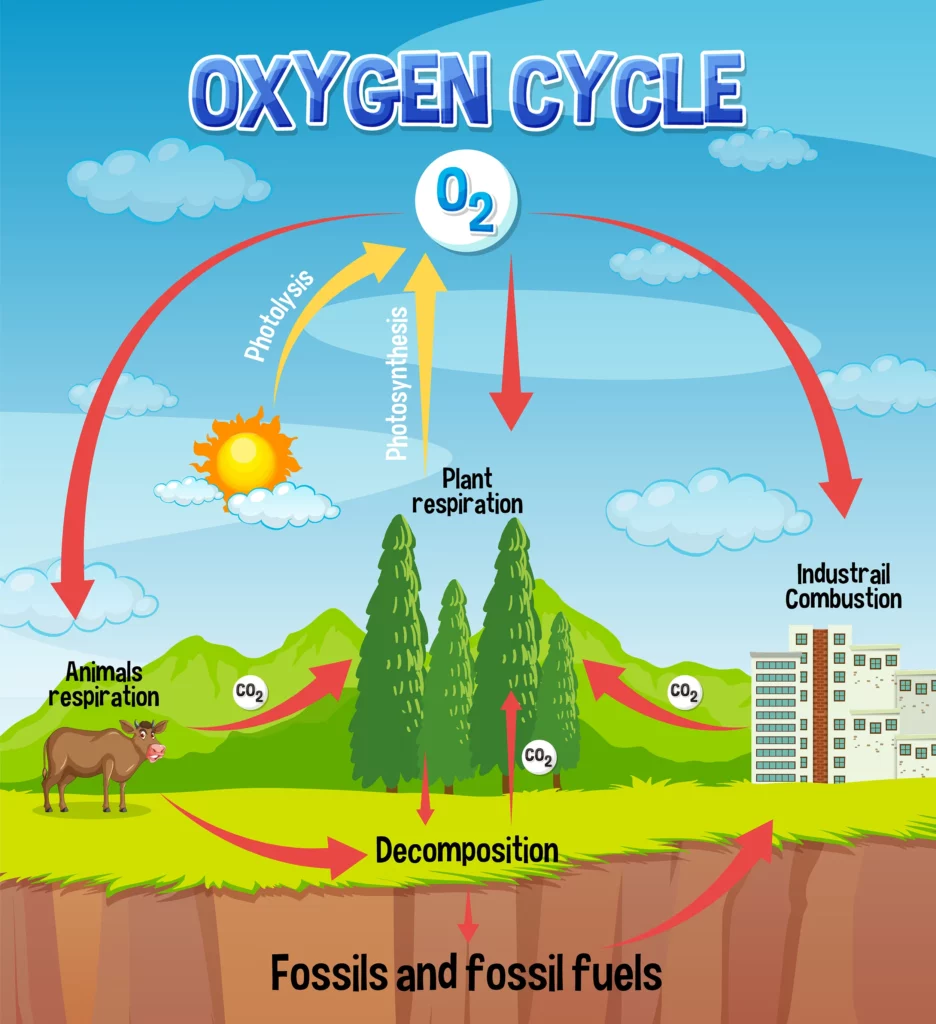Biogeochemical Cycles 3rd-5th Grade Quiz

Want to help students learn about how matter moves through our world? Our quizzes on biogeochemical cycles make this topic easy to grasp. Each quiz has a reading section and 8 multiple-choice questions that test key ideas. These quizzes follow Common Core and NGSS standards for both science and reading.
What is a Biogeochemical Cycle?
A biogeochemical cycle definition is simple: it’s how key elements move through living things, air, water, and land. These elements include water, carbon, nitrogen, phosphorus, and oxygen.
Think of these cycles as nature’s recycling system. Nothing is wasted. For example, the water you drink today might have once been in a cloud, a river, or even a dinosaur! The carbon in your body was once in the air, then in plants, and will someday return to the soil.
This continuous movement keeps life on Earth going by making sure all living things have what they need to survive.
Why these Biogeochemical Cycles matter
The biogeochemical cycle definition helps us see why these systems are vital. Without them:
- Plants wouldn’t get the nutrients they need to grow
- Animals (including us) wouldn’t have food or clean water
- The air wouldn’t have the right mix of gases for us to breathe
Our quizzes cover five main cycles that keep our planet healthy:
- The Water Cycle
- The Carbon Cycle
- The Nitrogen Cycle
- The Phosphorus Cycle
- The Oxygen Cycle
Our Environmental Quizzes Meet Education Standards
Teachers can use these quizzes with confidence. They align with:
- NGSS Standards: Earth and Space Science – Natural Resources
- Common Core ELA Standards: Reading Informational Text – Main Idea
Learn About Biogeochemical Cycles
The Water Cycle: How Water Travels
The water cycle shows how water moves from oceans to clouds to rain and back again. Water evaporates (turns to vapor), condenses (forms clouds), falls as precipitation (rain or snow), and flows back to oceans or lakes. This cycle gives us fresh water to drink, helps plants grow, and affects our weather. Our water cycle quiz shows how human actions like pollution can change this vital cycle.
The Carbon Cycle: Life’s Building Block
Carbon is in all living things. The carbon cycle shows how this element moves through air, soil, water, and living things. Plants take carbon dioxide from the air during photosynthesis. Animals eat plants and breathe out carbon dioxide. When plants and animals die, decomposers break them down, returning carbon to the soil and air. Our carbon cycle quiz explains how burning fossil fuels has upset this balance.

The Nitrogen Cycle: Food for Plants
Though 78% of our air is nitrogen, plants can’t use it directly. The nitrogen cycle shows how bacteria change nitrogen from the air into forms plants can use. After plants and animals die, other bacteria return nitrogen to the soil and air. Our nitrogen cycle quiz helps students see how farming and fertilizers affect this cycle.
Take the Nitrogen Cycle Quiz →

The Phosphorus Cycle: From Rocks to Life
The phosphorus cycle is different because it mainly moves through land and water, not air. Phosphorus starts in rocks and slowly breaks down into soil. Plants take it up through their roots. Animals get phosphorus by eating plants or other animals. When they die or create waste, phosphorus returns to the soil. Our phosphorus cycle quiz shows how this slow cycle works and why phosphorus is essential for DNA and energy molecules.
Take the Phosphorus Cycle Quiz →
The Oxygen Cycle: The Air We Breathe
The oxygen cycle keeps our air breathable. Plants create oxygen during photosynthesis. Animals and plants use oxygen during respiration and release carbon dioxide. This cycle keeps oxygen levels stable in our atmosphere. Our oxygen cycle quiz explains how plants, animals, and decomposers all play roles in this vital process.

How our environment quizzes multiple choice help students learn
Each quiz uses a simple format:
- A clear reading passage explains the cycle
- 8 multiple-choice questions test understanding
- Students get feedback on their answers
- Discussion points connect the topic to real life
